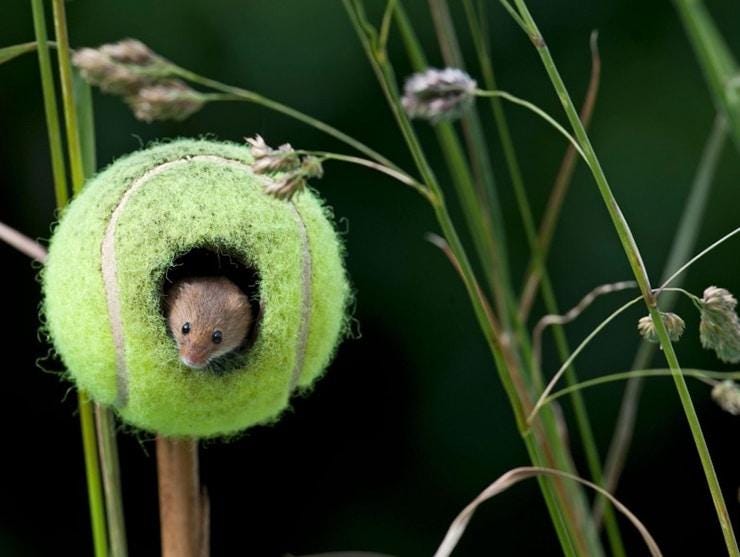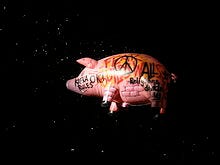A newsletter recommending good examples of storytelling across:
3 Trivia
2 Fun Facts, and
1 Photograph.
Let's dive in…
Trivia’s:
1. Science:
Once associated with the grandeur of ivory carving, this material became the cornerstone of an ancient craft in Lucknow after the ban on ivory. Artisans, particularly influenced by Mughal aesthetics, now use this durable yet pliable material to create intricate jaalis, jewelry boxes, and elaborate sculptures. Historically linked to royal patronage under the Nawabs of Avadh, it continues to captivate both domestic and international markets. The material is organic in nature.
What is this material?
2. General:
During World War II, the British Ministry of Information devised a clever campaign to obscure the use of a secret technology that played a pivotal role in the Allies' success. This technology, known as Airborne Interception Radar (AI), allowed RAF pilots to detect enemy planes during night missions, but to keep its existence hidden, the government credited their pilots' exceptional night vision to a rather surprising dietary habit.
It is also known for its high Vitamin A content, was also promoted as a sugar substitute during wartime rationing.
What is this myth?
3. Music:
This band, known for their elaborate live performances featuring dramatic props and visual spectacles, introduced a now-iconic inflatable prop during the tour for their album Animals. The prop, is big floating above the audience, became a symbol open to interpretation—some viewed it as a critique of the music industry, while others saw it as a satire of the audience itself.
After one member of the band left, taking the rights to the original prop with him, his former band mate devised a humorous workaround to avoid paying royalties. Let’s just say, they decided to "raise the stakes" (or perhaps lower them).
Which band? What distinctive modification did the later version of this prop feature during live performances, making it noticeably different from the original?
Fun Facts:
Did you know that old tennis balls from Wimbledon are given a second life as tiny homes for harvest mice? Each year, volunteers repurpose these balls, cutting small holes in them and placing them in the countryside to help these delicate creatures. Facing habitat loss due to modern farming, harvest mice find these "ball homes" to be perfect shelters, safe from predators and harsh weather. It's a unique way to combine sports and conservation!
African Acacia trees have their own version of a "neighborhood watch"! When giraffes or other herbivores start munching on their leaves, these trees send out a chemical distress signal—ethylene gas—that warns nearby trees of the impending threat. In response, neighboring trees ramp up their tannin production, making their leaves taste bitter and unappealing. Giraffes, being savvy browsers, have learned to outsmart this defense system by feeding upwind or moving to a new tree before the leaves get too bitter. It’s a fascinating example of how plants and animals interact in nature!
How can I improve your reading experience? Feel free to send me any feedback or suggestions at this email. You’re also welcome to share your experience and connect with me here!
Email- triviatales.in@gmail.com
Photograph of the Day:
The Story of Jantar Mantar:
The name Jantar Mantar translates to "instruments for measuring the harmony of the heavens," perfectly encapsulating its celestial purpose. Nestled in the heart of New Delhi, this iconic observatory boasts 13 architectural instruments designed to study the cosmos. It was the brainchild of Maharaja Jai Singh II of Jaipur, a visionary ruler born in 1688 who was deeply inspired by astronomy and mathematics.
Constructed in 1724, the Delhi Jantar Mantar was the first of five such observatories built by the Maharaja during the 18th century. The others can be found in Jaipur, Ujjain, Varanasi, and Mathura, forming a network of astronomical hubs across India. These observatories aimed to refine astronomical tables, predict celestial movements, and even revise the calendar—an exceptional scientific feat of their time.
Among all the Jantar Mantars, the one in Jaipur stands out. It had fallen into disrepair by the late 19th century but was meticulously restored in 1901 by Maharaja Ram Singh. Today, it is a UNESCO World Heritage Site, celebrated for its scale and precision.
The observatories built by Maharaja Jai Singh II were revolutionary for their time, offering a glimpse into a period when India led advancements in astronomy. These architectural marvels, scattered across various cities, continue to remind us of the harmony between science, art, and the heavens.
How can I improve your reading experience? Feel free to send me any feedback or suggestions at this email. You’re also welcome to share your experience and connect with me here!
Email- triviatales.in@gmail.com
In case if you have missed my previous newsletters here are the links to them…
give it a click
Answers:
Bone
The myth that eating carrots improves night vision
Pink Floyd; the addition of testicles to the inflatable pig.









